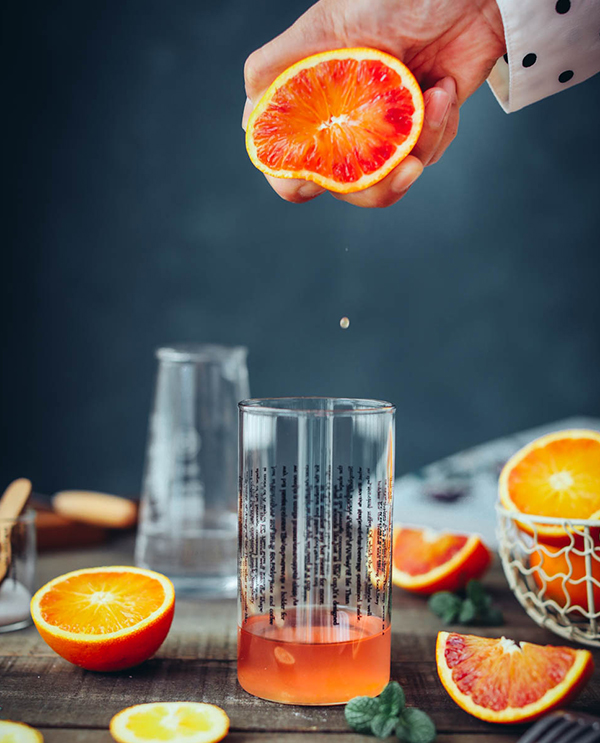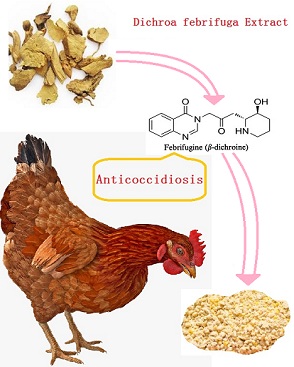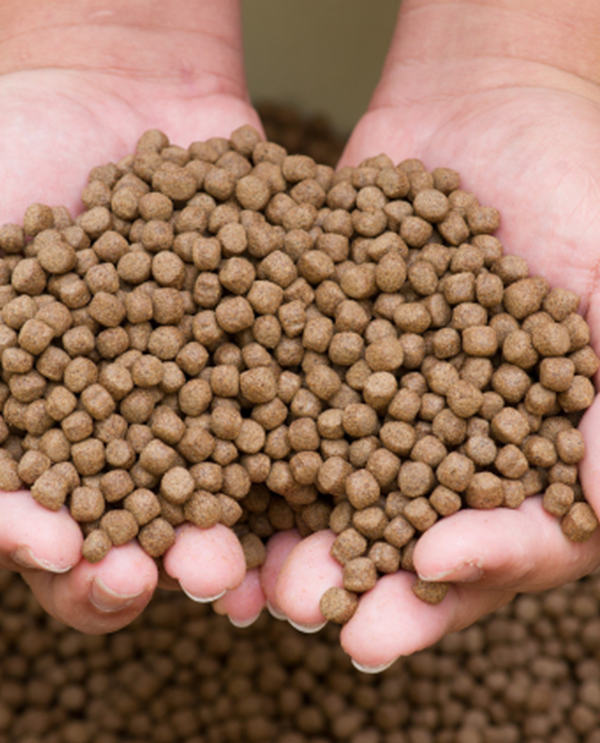- Plant-Based Protein
- Natural Plant Flavours
- Food and Dietary Supplement Ingredients
- Fruit Juice Powder
- Animal Nutrition Ingredients
- Water Soluble Ingredients
- Cosmetic Ingredients
- Unveiling the Therapeutic Potential of Rabdosia Rubescens: A Comprehensive Review
- What are the medicinal properties of Rabdosia Rubescens?
- Nutritional value of Orange Juice Powder compared to fresh orange juice.
- Processing Conditions and Nutritional Value of Orange Juice Powder
- Exploring the Versatility of Herbal Extracts in Food Flavors
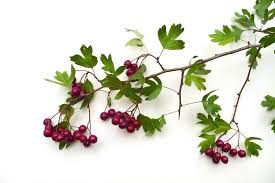
What are the health benefits of hawthorn leaf?
Welcome to our blog! Today, we are diving into the world of hawthorn leaf and uncovering its incredible health benefits. Whether you're a fan of herbal remedies or simply curious about natural alternatives, hawthorn leaf is definitely worth exploring.
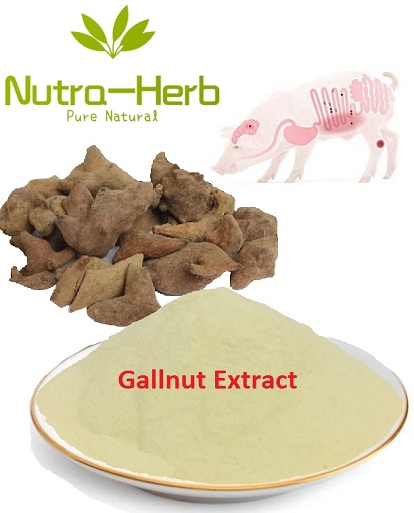

Chinese Gallnut extract,Tannic acid,Antimicrobial, Anti-oxidant, substitutes for antibiotics
Gallnut has the effect of anti gram positive and negative bacteria. It has good astringent effect on skin, mucous membrane and ulcer. It has a certain inhibitory effect on epidermal fungi. It can accelerate blood coagulation and stop bleeding.Dietary Tannic acid has some beneficial effect on the nutrient digestibility and growth performance of animals. Gallnut contains massive Tannic acid. The anti-diarrhea, anti-oxidation, microbial homeostasis regulation and other effects of Tannic acid have been found one after another.Gallnut tannic acid may improve the integrity of intestinal morphology and structure of avian and livestocks.
What you may get from us: If you're developing a feed additive that contains traditional Chinese medicine of Gallnut.I think you can find the information or products you need here.
Simple production process in our factory: After the gallnut is collected, It can be made straight powder. Or the raw material will be processed by solvent extraction, separation and purification, filtration, concentration, drying and other steps to form the final products. We may also design a prouction process based on your special requirements.
Through the physical and chemical processes, those compunds you don't want was removed, and the compunds preferred was accumulated. Which make the products achieve the best effects.
|
Gallnut Extract |
||
|
Appearance |
Powder |
|
|
Cas No. |
1401-55-4 |
|
|
Color |
Light Yellow |
|
|
Partical size |
Normally pass through 60mesh |
|
|
Pack size |
25 kg per paper drum |
|
|
Purity of active compunds |
90%Tannic acid |
By UV |
|
For pricing or more information, please call 86 29 88444632 or send an email to Sales@nutraherbsource.com.
|
||
General Information
Nutgalls
Synonyms
Nutgalls, blue galls, Turkish galls,Gallnut Chinese
Biological Source
Nutgall consists of the pathological outgrowth obtained from the young twigs of the dyers oak, Quercus infectoria Olivier, belonging to family Fagaceae. Outgrowth is caused by the puncture of ovums of insect Cynips tinctoria or Adleria gallaetinctoriae Olivier Family Cynipidae.
Chemical Constituents
Nutgalls contains about 50–70% tannin mainly gallotannic acid which is official tannic acid. It also consists of 2–4% gallic acid, ellagic acid, sitosterol, methyl belulate and methyl oleanolate which are methyl esters of betulic and oleanolic acid. Recently few more compounds such as Nyctanthic acid, roburic acid, and syringic acids have been reported from galls. It contains abundant starch.
Tannic acid of commerce is a hydrolysable tannin which yields gallic acid and glucose. The molecule of tannic acid may contain the gallic acid up to pentagalloyl glucose.
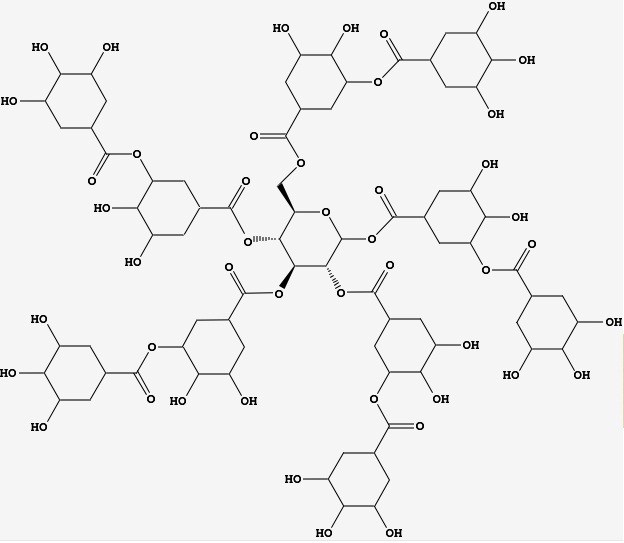
Background
For the sake of animal food safety and environmental protection, the era of banning antibiotics has come and the policy of limiting high zinc and high copper has been implemented. Therefore, it is extremely urgent to seek effective and natural pollution-free alternatives like plant extracts as substitutes for antibiotics, zinc oxide, high copper, etc. Tannic acid is one of the typical representatives of high molecular weight polyphenol compounds that mainly exist in a wide variety of plants, such as plant-derived feeds, grains, and fruits. Tannic acid was usually considered as an anti-nutritional factor in the past because it forms complexes with proteins, polysaccharides, digestive enzymes and metal ions, which are not conducive to the digestion and absorption of nutrients by animals and even considered to be toxic. However, some recent studies have shown that dietary Tannic acid has no effect or has some beneficial effect on the nutrient digestibility and growth performance of animals, which is contrary to the previous public cognition of Tannic acid. In addition, many medicinal plants with effect on mitigating diarrhea have revealed the presence of Tannic acid, like Gallnut contains massive Tannic acid, which even can reach 50–70% of its weigh. Subsequently, the anti-diarrhea, anti-oxidation, microbial homeostasis regulation and other effects of Tannic acid have been found one after another, which have attracted extensive attention of animal nutritionists.
Gut health-boosting of Tannic acid for piglets on intestinal barrier integrity
Post-weaning diarrhea usually results in high morbidity and mortality of piglets, which is a serious issue in pig production. The subsequent decline in growth rate has brought enormous economic losses in swine industry. Diarrhea in weaning piglet is mainly caused by weaning stress, lactogenic immunity deprivation, diet and environmental changes. Stress associated with early weaning leads to continuous impairment of intestinal barrier function in pigs. The intestinal barrier consists of a single layer of columnar epithelium and intercellular tight junctions of enterocytes, which serves as an important defense mechanism against hostile environment in the intestinal lumen. The complete intestinal barrier not only allows passage of select solutes that are beneficial to the host, but also effectively prevents the passage of antigens, bacterial toxins, and pathogens. Damage in the intestinal barrier, characterized by increased intestinal permeability, usually augments the risk of enteric infection, promotes the translocation of luminal bacteria, toxins, and antigens into subepithelial tissues, and finally results in inflammatory reactions and gastrointestinal diseases. These are the most common pathogenic factors of severe diarrhea in piglets. Therefore, the integrity and function of intestinal barrier play an important role in alleviating diarrhea of weaned piglets.
Tannic acid has a strong convergence effect in the gastrointestinal tract of pigs and poultry, which slows down intestinal peristalsis, strengthens colonic water and electrolyte reabsorption, and further alleviates the occurrence of diarrhea. Moreover, Tannic acid has been proved to improve intestinal damage, increase villus height and reduce crypt depth, thus improving the integrity of intestinal morphology and structure.
Antibacterial effect of Galla chinensis extract
Tannin and gallic acid are the main functional components in gallnut. Tannin can be hydrolyzed, which is formed by the combination of gallic acid, double acid and glucose in the form of glycosides or esters. It has the biological activities of caries prevention, bacteriostasis, sterilization, spermicidal, mutation inhibition, antioxidant and free radical scavenging. Gallic acid is transformed from the hydrolyzable tannin of Gallnut by tannase producing microorganisms. It has anti-tumor, trypanosoman, anti-inflammatory, antibacterial, hypoglycemic and ester reducing effects.
Anti coccal action
It was found that gallnut alcohol extract had strong antibacterial or bactericidal effects on Streptococcus mutans Ingbritt strain and Streptococcus pilosulcus, and the size of inhibition zone was 20.41 mm and 10.46 mm, respectively. The main antibacterial active components are tannin and gallic acid (gallic acid is mainly obtained by hydrolysis of tannin), etc. the antibacterial mechanism may be that tannin coagulates Protoplast in microorganism and acts on many enzymes.
Studies have found that gallnut has good antibacterial activity against Staphylococcus aureus. The MIC90 of Galla chinensis against 112 strains of Staphylococcus aureus was only 0.102 mg / ml, that is, gallnut decoction could inhibit 90% of 112 strains of Staphylococcus aureus. The reason may be that Chinese gallnut can reduce the permeability limitation of Staphylococcus aureus BF, and make the effective antibacterial components penetrate into Staphylococcus aureus BF and play a role in bacterial clearance; or gallic acid has antibacterial effect on Staphylococcus aureus.
Anti bacilli action
The results showed that gallnut had obvious inhibitory effect on Actinobacillus. The diameter of inhibition zone was 15 mm, and the sensitivity was highly sensitive. The antibacterial effect of the compound Chinese medicine combined with wild extract and Rhizoma Coptidis was better than that with Rhizoma Coptidis. In addition, gallnut extract has obvious bacteriostatic or bactericidal effects on Escherichia coli, typhoid bacillus, dysentery bacillus, Diphtheria Bacillus, anthrax bacillus, Pseudomonas aeruginosa, etc.
Effect on resistant bacteria
The results showed that the antibacterial effect of the extract from gallnut on Staphylococcus aureus was not significant.
The average elimination rate of gentamicin, kanamycin, demecycline and cefazolin was 12.54% in 24 hours, and the elimination rate was increased with the prolongation of action time, showing a time-dependent. The reason may be that some small molecules determine the drug resistance gene, and its insertion sequence or transposon is cancelled, thus reducing the drug resistance; or in the case of the plasmid band is not lost, the drug resistance gene mutation of the strain occurs, so the drug resistance of the strain decreases.
Antiviral effect
Li Jiakun and others reported that gallnut, mume, dried alum, realgar and rhubarb mixed with vinegar in a certain proportion can be used to treat infectious soft wart. 93 patients were clinically treated, with an average of 7.5 days. Some experiments have shown that gallnut decoction has inhibitory effect on influenza A virus PR3 strain inoculated in chicken embryo, which may be related to tannins in gallnut. In recent years, gallnut tannin has been found to have a strong inhibition of HIV - Rt activity.
Scavenging free radicals and antioxidation of gallnut extract
Gallnut tannin and gallic acid have more ortho phenolic hydroxyl structure. As a hydrogen donor, it releases hydrogen to combine with free radicals in the environment to stop the chain reaction caused by free radicals, so as to prevent the continuous transmission and progress of oxidation process. Therefore, it has a strong scavenging effect on superoxide radicals in vivo, thus producing anti-aging effect. At the same time, due to the free radical scavenging, it can protect the damage of biological macromolecules induced by free radicals, maintain the flow of cell membrane and protein conformation, and prevent DNA breakage induced by radiation. Therefore, it has the unique functions of inhibiting lipid peroxidation, cardiovascular disease, antimutagenicity, anticancer, and anti white internal barrier. Li Huaijing et al. Reported the anti-aging effect of Galla chinensis Decoction on mice. Fu Naiwu et al. Reported that gallnut tannin inhibited the formation of nitrosamines and antagonized reactive oxygen species in vivo. Xie Daogang et al. Reported the preliminary study on the inhibitory effect of gallnut extract on mutation.
- No Prev
- Next:Rabdosia rubescens, Antibacterial,Antivirus,Antibiotic alternative,poultry,livestock,influenza



